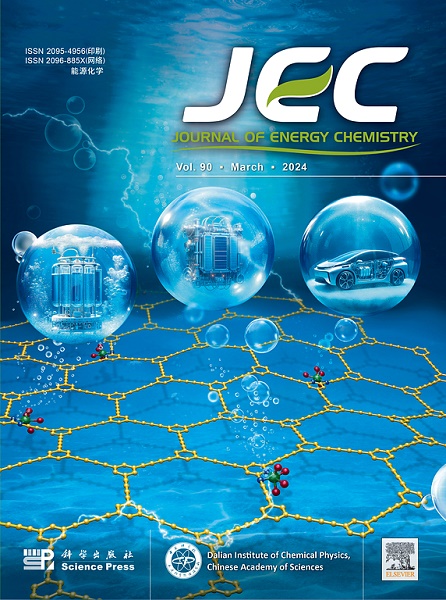Ultrahigh nickel cathode with microstructural refinement and intergranular coating for high-energy Li-ion batteries
IF 13.1
1区 化学
Q1 Energy
引用次数: 0
Abstract
Ultrahigh nickel oxides (Ni content > 90%) hold great promise for high-performance cathodes for the future generation of lithium-ion batteries (LIBs). However, these cathode materials cause problems such as harmful parasitic reactions at the cathode/electrolyte interface, degradation of the layered structure, and the creation of microcracks. Herein, a microstructural refinement and intergranular coating strategy is proposed to engineer ultrahigh nickel cathode LiNi0.96Co0.03Mn0.01O2 (NCM). The W-doping-induced fine-grained microstructure not only endows NCM with excellent mechanical properties but also promotes infiltration of the fluoride-containing coating along the grain boundaries inside the secondary particles, thereby forming intergranular coatings. This combined fine-grained microstructure and intergranular coating strategy reduces the formation of microcracks and suppresses the additional parasitic electrolyte reactions caused by them, thereby inhibiting the degradation of the layered phase. Consequently, the modified NCM cathode achieved exceptional electrochemical properties, especially delivering a high initial capacity of 230.8 mA h g−1 (0.1 C) and a capacity retention exceeding 96% after 100 cycles at 0.5 C in half cells. After 500 cycles in full cells, the capacity retention increases by 21.2% compared with NCM. This strategy mitigates multiple degradation mechanisms in Ni-rich cathodes and provides a generalized strategy for developing advanced ultrahigh-nickel cathodes for industrial application.

求助全文
约1分钟内获得全文
求助全文
来源期刊

Journal of Energy Chemistry
CHEMISTRY, APPLIED-CHEMISTRY, PHYSICAL
CiteScore
19.10
自引率
8.40%
发文量
3631
审稿时长
15 days
期刊介绍:
The Journal of Energy Chemistry, the official publication of Science Press and the Dalian Institute of Chemical Physics, Chinese Academy of Sciences, serves as a platform for reporting creative research and innovative applications in energy chemistry. It mainly reports on creative researches and innovative applications of chemical conversions of fossil energy, carbon dioxide, electrochemical energy and hydrogen energy, as well as the conversions of biomass and solar energy related with chemical issues to promote academic exchanges in the field of energy chemistry and to accelerate the exploration, research and development of energy science and technologies.
This journal focuses on original research papers covering various topics within energy chemistry worldwide, including:
Optimized utilization of fossil energy
Hydrogen energy
Conversion and storage of electrochemical energy
Capture, storage, and chemical conversion of carbon dioxide
Materials and nanotechnologies for energy conversion and storage
Chemistry in biomass conversion
Chemistry in the utilization of solar energy
 求助内容:
求助内容: 应助结果提醒方式:
应助结果提醒方式:


